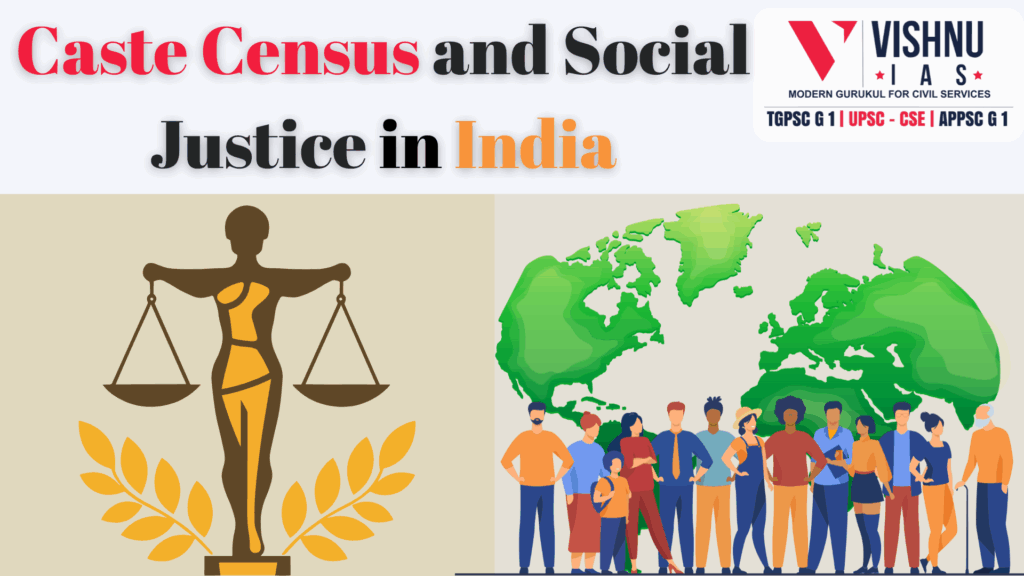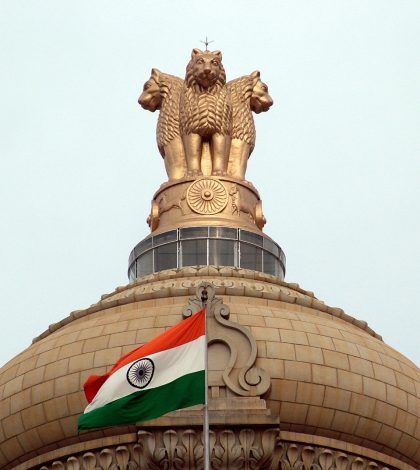Caste Census and Social Justice in India
Introduction
Caste census data has historically served as a foundation for shaping public policy in India, offering insights into crucial sectors such as health, education, employment, and housing. However, the recent announcement to include a caste census as part of the National Census has rekindled debates. Proponents argue that such an exercise is indispensable for evidence-based policymaking, ensuring that marginalized groups receive targeted benefits. On the other hand, critics caution against its potential misuse, fearing it may fuel identity politics and deepen societal divisions. This debate highlights the complexity of balancing equity with unity in a diverse nation like India.
Historical Context of Caste Census

Colonial Period
- The roots of caste enumeration in India trace back to British colonial administration. Beginning in 1871, the decennial censuses included detailed caste-based data collection.
- This practice continued until 1931, providing a comprehensive demographic snapshot of Indian society.
- However, the exigencies of World War II disrupted the 1941 census, resulting in incomplete and unpublished caste-related data.
- The colonial administration primarily used caste enumeration to classify and manage the Indian population for administrative and economic purposes.
- While these records were criticized for entrenching caste identities, they also provided valuable socio-economic insights.
Post-Independence
- Following independence, India chose to move away from caste enumeration in the decennial census, except for Scheduled Castes (SCs) and Scheduled Tribes (STs), as mandated by Articles 341 and 342 of the Constitution.
- This decision aligned with the vision of building a caste-neutral society. However, the socio-economic realities necessitated targeted interventions for backward classes.
- Article 340 empowered the President to appoint commissions to examine the conditions of socially and educationally backward classes.
- The Mandal Commission (1979-1980), relying on 1931 census data and extensive surveys, recommended 27% reservations for Other Backward Classes (OBCs).
- These recommendations transformed the discourse on social justice in India.
Modern Attempts
- Efforts to reintroduce caste enumeration gained momentum in recent decades. The Socio-Economic and Caste Census (SECC) of 2011 aimed to provide updated data, but caste-specific findings were withheld due to inconsistencies and technical challenges.
- Other surveys, such as those by the National Sample Survey Organization (NSSO) and National Family Health Surveys (NFHS), have indirectly highlighted caste-based disparities.
- However, they lack the granularity and comprehensive scope of a full-fledged caste census.
Why Conduct a Caste Census?
Evidence-Based Policymaking
- Accurate and updated caste data is critical for formulating and recalibrating policies aimed at achieving social equity. Existing affirmative action programs for SCs, STs, and OBCs rely on outdated data, which may fail to address contemporary socio-economic realities.
- A caste census can reveal intra-group disparities, facilitating the sub-categorization of OBCs to ensure equitable distribution of benefits.
- For instance, the Rohini Commission’s observations about uneven access to resources among OBC sub-groups underscore the need for detailed caste data.
Strengthening Democratic Representation
- Caste data is instrumental in ensuring that legislative and local body seat reservations align with demographic realities.
- However, implementing changes based on new caste data may challenge established legal precedents, such as the Supreme Court’s 50% cap on reservations in the Indra Sawhney v. Union of India (1992) case.
- This underscores the need for judicial and legislative dialogue to address potential conflicts and adapt to changing societal needs.
Addressing Blind Spots
- A caste census can illuminate inequities within groups that are often treated as monolithic entities.
- For example, understanding disparities among OBC sub-castes or examining the socio-economic status of traditionally non-backward castes can pave the way for more inclusive policies.
- By targeting interventions at underrepresented sub-castes, policymakers can bridge gaps and foster equity across all societal strata.
Empirical Evidence on Caste Disparities
Socio-Economic Gaps
- The Mandal Commission’s findings remain a stark reminder of the systemic inequalities faced by OBCs in education, employment, and income.
- Similarly, the Sachar Committee Report (2006) exposed the socio-economic backwardness of Muslims, including those classified as OBCs.
- Additional evidence from NSSO and NFHS surveys highlights persistent caste-based disparities in areas like child nutrition, maternal health, and literacy.
- These findings emphasize the urgency of granular data to address entrenched inequalities.
Intersection of Caste, Class, and Region
- Caste inequities often intersect with class and regional disparities, creating a complex web of disadvantages.
- For instance, poverty exists among upper castes in certain regions, while some OBC sub-castes enjoy relative affluence.
- Understanding these intersections through a caste census can help policymakers design interventions that account for multiple layers of disadvantage, ensuring that no group is left behind.
Constitutional and Legal Framework
Relevant Articles
- Article 15: Prohibits discrimination on grounds of caste, while permitting special provisions for the advancement of socially and educationally backward classes.
- Article 16: Ensures equality of opportunity in public employment, allowing for reservations for backward classes.
- Article 340: Empowers the President to establish commissions to investigate the conditions of backward classes and recommend measures for their advancement.
Judicial Precedents
- Indra Sawhney (1992): Established the 50% reservation cap and introduced the creamy layer concept for OBCs.
- Nagaraj (2006): Mandated quantifiable data to justify reservations in promotions.
- Jarnail Singh (2018): Simplified evidentiary requirements for backwardness in promotions, emphasizing the importance of empirical data.
Limitations and Risks of Caste Enumeration
Risks of Identity Politics
- Caste data has the potential to deepen societal divisions by reinforcing caste identities. Politicians may exploit this information for vote-bank politics, diverting attention from broader developmental issues. Such misuse could threaten national unity and hinder efforts to transcend caste-based distinctions.
Data Complexity and Misuse
- Standardizing caste lists across regions is a formidable challenge, given India’s linguistic and cultural diversity. Inaccuracies in data collection or breaches of privacy could undermine public trust in the census. Ensuring credibility requires meticulous planning and robust safeguards.
Policy Limitations
- While caste data is essential, it is not a panacea for social justice. Effective reforms must address intersecting factors such as education, healthcare, and regional disparities. A comprehensive approach is needed to translate data into meaningful change.
Political and Institutional Challenges
Political Consensus
- Reaching consensus on sensitive issues like defining OBC categories and revising reservation quotas is fraught with challenges. Balancing Union and state priorities adds another layer of complexity, particularly in a federal system where states have significant autonomy over caste policies.
Logistical Challenges
- Conducting a caste census requires significant resources and coordination. Enumerators must be adequately trained, and public outreach is critical to ensure participation and minimize misinformation. Operational errors could compromise the quality of data, leading to public skepticism.
Measures to Ensure Effective Implementation
Transparent Methodology
- Adopting a scientifically sound methodology with stakeholder consultations can enhance the accuracy and acceptance of the caste census. Transparency at every stage, from data collection to analysis, is crucial to building public trust.
Privacy and Data Security
- Strict data protection measures are imperative to prevent misuse and ensure compliance with legal frameworks like the Personal Data Protection Bill. Safeguarding the confidentiality of respondents should be a top priority.
Integration with Broader Policies
- Caste data should not exist in isolation. Linking it with broader welfare programs under initiatives like the National Mission on Sustainable Agriculture and Skill India can maximize its utility. Such integration ensures that caste-based interventions are part of a holistic development strategy.
Conclusion
A caste census holds transformative potential for advancing social justice in India by providing empirical data for targeted policymaking. However, its success hinges on careful implementation, addressing logistical, ethical, and political challenges. Policymakers must strike a delicate balance between leveraging caste data for equity and fostering national unity. Ultimately, the focus should remain on building an inclusive and equitable society that transcends caste barriers while respecting India’s rich diversity.


